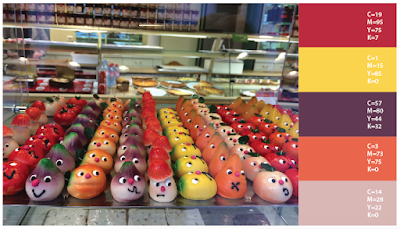Sunday, October 30, 2016
Friday, October 21, 2016
Calligraphy Demo with Heber Miranda
Considering I previously knew nothing about calligraphy, I found the
class demonstration quite interesting. Heber Miranda is a graphic
designer and calligrapher with design education from both City College
and SDSU. He currently works for MaeLin's design firm, Visual Asylum.
Heber
introduced us to many different calligraphy tools and techniques,
including cola pens, pilot parallel pens, ruling pens and various
calligraphy style brushes. He actually makes his own calligraphy pens,
which are beautiful ergonomic pieces handcrafted from wood and other
materials. The fact that he has (self-proclaimed) "terrible
handwriting" is fascinating, because his calligraphy strokes are rather
elegant and refined. Heber describes calligraphy as his "obsession,"
and after hearing about the endless hours he spends practicing, I have
a better understanding of the level of commitment and discipline necessary to
master this particular craft.
Heber referred us to a website to use as a resource for learning more about calligraphy: www.iampeth.com
Thursday, October 20, 2016
Monday, October 17, 2016
Amor + Keisuke
What a treat to meet Amor and Keisuke! Being a first-year student in the Graphic Design department, it was really inspiring to hear a personal success story that has its roots at City College. I enjoyed learning all about Amor and Keisuke's collective journey - Starting at City with their internships at Visual Asylum and Bennett Peji; their full scholarships to ArtCenter that lead to opportunities in Berlin and adventures at the Bauhaus; their passions for collaborative thinking and positive social impact, and their contributions in the Designmatters program; and finally their return to City College to pursue Future Studies.
Amor and Keisuke's presentation was full of
information and inspiration, but what struck me the most was their
teamwork, their tenacity and their refusal to take NO for an answer.
Amor gave a fantastic piece of professional advice (that's applicable to
any industry) when she said you have to create your own opportunities.
To succeed in any competitive field you have to think ahead and take
the initiative. And this creative team is living proof of that motto.
A few other tidbits that I found notable:
- Continue to build your virtual toolbox
- Always bring it back to the needs of the client
- Your OBSESSIONS are important
- Celebrate collaborative thinking
- Steps of design/creation process:
- Discovery
- Ideation
- Prototyping
- Implementation
Sunday, October 16, 2016
Thursday, October 13, 2016
Monday, October 10, 2016
Video Summary: Color for Design and Art
I learned a great deal from Jim Krause's interesting and informative video, Color for Design and Art. Below is an outline of some of the main points:
Color is a pulsation of electromagnetic energy.
The color wheel is a designer's friend. Get to know it!
The properties of color can be described with three characteristics:
Color Systems
Color Wheel Based Palettes:
When choosing the "right color" for a client:
- Make sure it connects with the target audience
- Look for a color that's not currently being used by the client's competitors
- Choose a color that effectively represents the client's product
Methods of working with color when designing an illustration:
- Begin illustration by focusing on the value (all grays), and then substitute the colors.
- Choose a color you like, then create a palette based on that color
- Borrow color inspiration for famous painters: Vermeer, Klee, Klimt, Miro, etc.
Color is a pulsation of electromagnetic energy.
The color wheel is a designer's friend. Get to know it!
Primary Colors (red/yellow/blue)
Secondary Colors (orange/purple/green)
Tertiary Colors (one primary + one secondary color)
Hue (color)
Saturation (brightness or intensity)
Value (lightness/darkness)
Without value there can be no hue or saturation.
Color Systems
RGB (red, green, blue) is used for digital images on screen.
CMYK (cyan, magenta, yellow, black) is used for process color printing, with images printed as densities of tiny dots.
Spot Colors (aka Pantone/PMS) are pre-mixed single colors used for ink printing.
Programs such as Photoshop can convert colors from one system to another.
Monochromatic
Analogous
Triadic
Complimentary
Split Complimentary
When choosing the "right color" for a client:
- Make sure it connects with the target audience
- Look for a color that's not currently being used by the client's competitors
- Choose a color that effectively represents the client's product
Methods of working with color when designing an illustration:
- Begin illustration by focusing on the value (all grays), and then substitute the colors.
- Choose a color you like, then create a palette based on that color
- Borrow color inspiration for famous painters: Vermeer, Klee, Klimt, Miro, etc.
Thursday, October 6, 2016
Subscribe to:
Comments (Atom)









